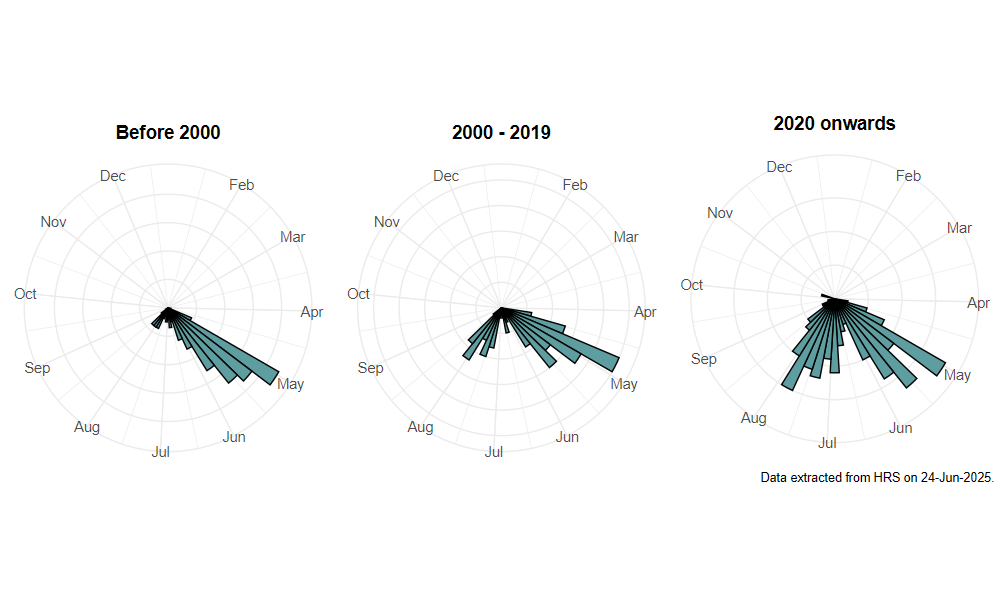Heringia heringi (Zetterstedt, 1843)
Identification
Identification difficulty = 5. ![]()
![]() according to Ball & Morris, 20241
according to Ball & Morris, 20241
Biology
The larva attacks the gall-forming aphid Schizoneura lanuginosa on Elms Ulmus, and have also been reared from aphid galls caused by Pemphigus populitransversus on Poplars Populus, and from galls on Salix. This is a woodland species usually found resting on sunny vegetation in woodland rides, clearings and edges or in mature hedgerows. According to Speight (2017)2, adults prefer partially shaded situations and also visit flowers in partial shade. This species may have suffered a decline as a result of Dutch Elm Disease.
Flight period
The following plots show the number of unique records per week excluding those reported to be of immature stages.

Distribution
A local species in southern England with scattered records further north and west to Lothian. Field experience indicates that this species can be abundant, but like most pipizines, is missed by recorders who either overlook or avoid them.

Trends
The following plots show the Frescalo TFactor vs year and a map of the rescaled frequency (all records) for the species.
-
Ball, S., & Morris, R. (2024). Hoverflies of Britain and Ireland. WILDGuides (3rd ed.). Oxford: Princeton University Press. ↩
-
Speight, M. (2017). Species accounts of European Syrphidae ( No. 97). yrph the Net, the database of European Syrphidae (Diptera) (p. 294). Dublin: Syrph the Net publications. Retrieved from https://pollinators.ie/wordpress/wp-content/uploads/2018/05/StN-2017-Species-Accounts.pdf ↩